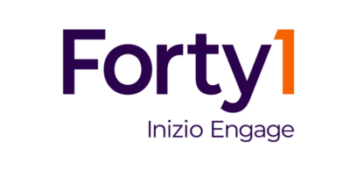The implications of Meta’s Workplace wind-down for your employee communications.
You’ve probably heard that in 2026 Meta is shutting down its employee engagement platform, Workplace, favoured by many large organisations for its familiar social media layout, interactive team communications and ease of integration. It means that many of us will be looking for a new place for our employee communications to call home in the not-too-distant future.
It’s worth peering in the window of the estate agent sooner rather than later and taking stock of the employee engagement platforms available. Selecting a new one takes time – there are stakeholder buy-in, budget, migration, training, communications considerations, to name a few.
But – like a good chucking-out session before we move house – such a move warrants the need to pause, reflect and review the effectiveness of our own channel landscapes.
It’s also a good time to examine the critical link between internal communications and employee motivation. We know motivation is the engine of behaviour and decision-making, driving collaboration and commitment within organisations. When you get your internal communications platform right, you significantly enhance these motivational drivers, leading to a more engaged and motivated workforce.
To help you navigate this moving process, we’ve developed a list of recommended actions to guide you through the next 12 months…
Assemble a cross-functional team with leadership buy-in
- Securing executive support for your project will help with credibility and resource allocation.
- A steering committee comprised of functional leaders from HR, L&D, IT will help to meet diverse needs.
Create a communications strategy that meets the needs of your people and your organisation, based on data and insights.
- Conduct a channel audit – Analyse use of existing communications tools and platforms to determine what is working and what isn’t.
- Build your benchmark – Examine the analytics for your current platform to help set the KPI’s for your next one.
- Listen to your people – Shape your new communications landscape from the needs and expectations of your people, gather insights and understand common pain points, frustrations and hopes for a better communications experience.
- Re-evaluate the business problem – Articulate the core business problems your communications are intended to solve (e.g. breaking down silos, improving information flow or enhancing employee engagement) and use this as a guide for choosing a platform that helps you overcome this.
Find the right technology partner to help you navigate your key functional considerations:
- Platform integration & data transfer – How will your information migrate from one platform to another? How will it work with other platforms?
- Navigation and user experience – Does it match the needs of your audience? How creative can you be with it? What customisation is available?
- Networks, communities, Instant Messaging – Can it hold space for your existing ERGs and interest groups? How will IM work?
- Content capabilities – Does it offer flexibility in content formats (i.e. short social posts, long form articles, video, podcasts etc.)? What content performs best? Could it host townhalls, Q&A’s and webinars? Live streams?
- Knowledge & resources – How could your existing repository of information be stored here? Does it need to be?
- Surveys, polls, insights – What insights and data could this platform gather?
- Access, permissions & reporting – Can you monitor who can author, edit and post content? Use data and analytics to track your success?
Before launching your new platform, ensure you have the necessary support and roadmap in place.
- Get the measure of your audience – Insights you gathered in Step 1 will be invaluable here. Equip leaders, influencers and early adopters who have what it takes to drive awareness and engagement in the new platform with these insights – they’re your champions during ‘the move’.
- Create the conditions for behaviour change – We need people to adjust their ways of working to accommodate the new platform. (The COM-B model of behaviour change is a useful guide here: Capability, Opportunity & Motivation to engage in new ways of working).
- Layout your transition roadmap – Successfully transitioning between platforms requires collaboration from leaders, IT, HR and internal communications advocates. Consider a soft launch with advocates to test migration and functionality. Decide whether to run Workplace alongside during migration or opt for a hard stop.
It’s time to move! Give people a reason and a purpose to join you on the new platform:
- Put out your welcome mat – Make sure that when people land on your new platform, they’re greeted with content, resources and conversation that makes them want to stay. This should be a mixture of your existing content migrated over from other platforms, latest news and updates, as well as exclusive content to draw people in.
- Utilise all your channels – From virtual and in-person events to line manager briefings, to digital branding around offices and breakrooms, it’s important to shape a consistent, multi-channel experience with the single aim of encouraging users to engage with your new platform.
- Create a cut-through, creative campaign – An insight-driven creative campaign, complete with an impactful look and feel, will help grab employees’ attention, making sure the launch is highly visible across what are already quite noisy channels.
- Measure your success – Make sure you revisit the KPIs you set yourself at the start of the project and use them to guide how you’ve drive successful adoption.
A digital transformation of this scale is bound to feel daunting, but with the right planning and preparation you can turn ‘the move’ into an opportunity. Regardless of the platform provider you choose to partner with, make sure you grab this chance to re-invigorate your internal communications experience in a way that works for your business and drives the motivation of your people.




